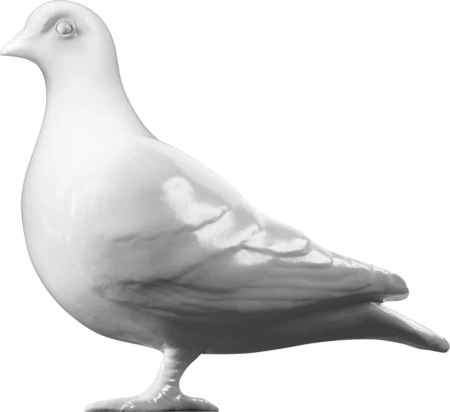Saxon & Medieval — Late Medieval; 14th century
St Thomas Becket's murder
Pilgrim badge from the shrine of St Thomas Becket at Canterbury Cathedral. This badge depicts the scene of Becket’s martyrdom. An inscription at the base of the badge reads 'THOMAS MA’ (meaning ‘Thomas Martyr’). Becket is on his knees in front of an altar with four knights attacking him. Behind the altar stands the figure of Edward Grim, a clerk who tried to stop Becket’s murder. One of the knights carries a shield with two bears’ heads on it, identifying him as Reginald Fitzurse (through the visual pun on the Latin ‘ursus’, meaning ‘bear’). Fitzurse was the knight popularly believed to have struck final blow that killed Becket. An irregular line running across the badge suggests that it was made in a cracked mould.
Thomas Becket was born in London in 1118. He became a royal official and a great friend of King Henry II. He was made Archbishop of Canterbury in 1162. He argued with King Henry II, and fled to France in 1164. Thomas Becket returned to Canterbury in 1170 and was killed in the cathedral by four knights who thought this would please the king. People were outraged at the murder of an archbishop on holy ground and Becket was made a saint. He became one of the patron saints of London. Many Londoners travelled to Canterbury to pray at the shrine there and bought badges and ampullae (small bottles for holy water) as souvenirs of their pilgrimage.
- Category:
- Saxon & Medieval
- Object ID:
- 97.95/1
- Object name:
- St Thomas Becket's murder
- Object type:
- Artist/Maker:
- —
- Related people:
- Related events:
- Related places:
- Production date:
- Late Medieval; 14th century
- Material:
lead alloy, tin alloy, pewter
- Measurements/duration:
- H 51 mm, W 60 mm, D 5 mm (overall)
- Part of:
- —
- On display:
- —
- Record quality:
- 100%
- Part of this object:
- —
- Owner Status & Credit:
Permanent collection
- Copyright holder:
digital image © London Museum
- Image credit:
- —
- Creative commons usage:
- —
- License this image:
To license this image for commercial use, please contact the London Museum Picture Library.

